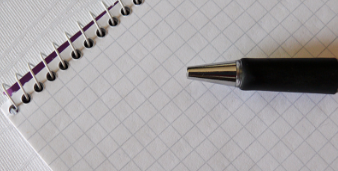
Frayer Model Google Draw

Overview
The Frayer Model is an instructional strategy that helps students learn new concepts by using examples and non-examples. By combining this instructional strategy with Google Draw, teachers may quickly customize and disburse organizers for classroom use and also improve student engagement.
Learning Objectives
Students will:
- Be able to develop key understandings, concepts, and vocabulary.
- Be able to compare examples and non-examples.
- Be able to create visual representations of understandings, concepts, and vocabulary.
- Develop skill using different draw tools, adding text, and importing images.
Vocabulary
-
Import: Import means to bring in something from a different source.
-
Text: Text is the written words found in books or other writings.
-
Fill Tool: The fill tool is used to pour large amounts of paint color onto a canvas.
Pre-planning
- If you are new to Google Draw this 13-minute tutorial reviews how to use Google Draw to make organizers and includes the basics of how to use Google Draw for students and teachers.
-
Create a copy of the Frayer Model template by clicking on the “make a copy” button. Rename it and add it to your documents.
-
Check out his website for several useful graphic organizer templates.
-
Here is information on what and how to use the Frayer Model.
-
Make desired edits to the organizer. You may copy and paste additional organizers into the file if more than one vocabulary word will be part of the project.
Accommodations
- See Accommodations Page and Charts on the 21things4students.net site in the Teacher Resources.
Steps
-
Direct students to your learning management system (e.g., Google Classroom, Schoology) to pick up a copy of the Frayer Model or post this link to a website and have students click on the “make a copy” button.
-
Introduce a vocabulary word and explain that the class will each make their own graphic organizer for the vocabulary word.
-
Model how to enter text for the definition, examples and non-examples,
-
Model how to use the draw tool to sketch a representation of the word, examples or non-examples.
-
Model how to use the image tool to import images that represent the word, examples, or non-examples.
-
If needed, have students add their name to the project for printing. If submitted through Google Classroom the name will automatically be added to the title.
-
Repeat with new organizers for additional words as needed.
Assessment Options
- Observations
- Check for understanding
- Example rubric
MITECS COMPETENCIES & ISTE STANDARDS
MITECS: Michigan adopted the "ISTE Standards for Students" called MITECS (Michigan Integrated Technology Competencies for Students) in 2018.
Empowered Learner
1d. Students understand the fundamental concepts of technology operations, demonstrate the ability to choose, use and troubleshoot current technologies and are able to transfer their knowledge to explore emerging technologies.
Knowledge Constructor
3c. Students curate information from digital resources using a variety of tools and methods to create collections of artifacts that demonstrate meaningful connections or conclusions.
Creative Communicator
6a. Students choose the appropriate platforms and tools for meeting the desired objectives of their creation or communication.
6b. Students create original works or responsibly repurpose or remix digital resources into new creations.
6d. Students publish or present content that customizes the message and medium for their intended audiences.
Devices and Resources
Device: PC, Chromebook, Mac, iPad
Browser: Chrome, Safari, Firefox, Edge, ALL
Websites:
Ditch That Textbook graphic organizer examples
CONTENT AREA RESOURCES
Math
-
Illustrate and provide examples and nonexamples of math concepts.
Science
-
Illustrate and provide examples and nonexamples of science concepts.
Social Studies
-
Compare and contrast a historical event.
Credits
This task card was created by Patricia Paxton, Armada Area Schools, June 2018.


